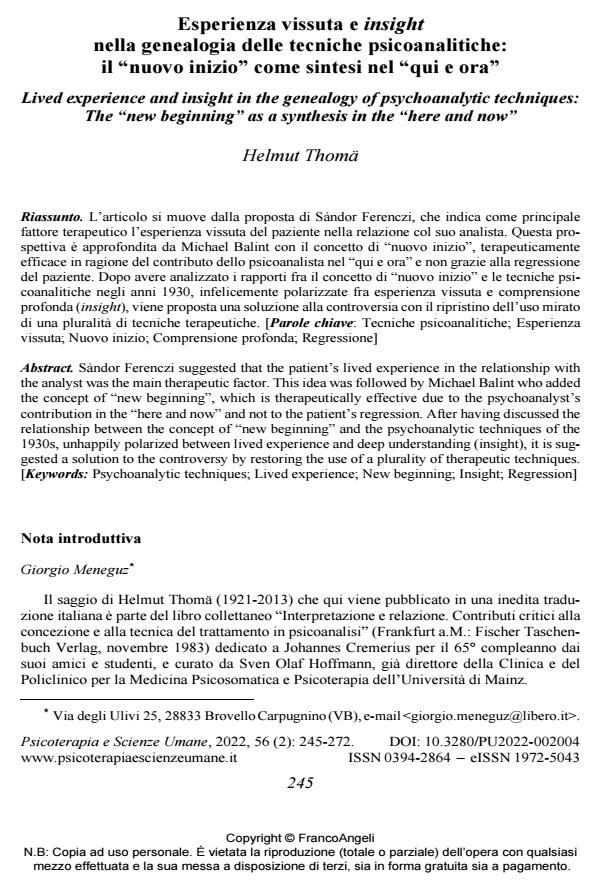Lived experience and insight in the genealogy of psychoanalytic techniques: The "new beginning" as a synthesis in the "here and now"
Journal title PSICOTERAPIA E SCIENZE UMANE
Author/s Helmut Thomä
Publishing Year 2022 Issue 2022/2
Language Italian Pages 28 P. 245-272 File size 395 KB
DOI 10.3280/PU2022-002004
DOI is like a bar code for intellectual property: to have more infomation
click here
Below, you can see the article first page
If you want to buy this article in PDF format, you can do it, following the instructions to buy download credits

FrancoAngeli is member of Publishers International Linking Association, Inc (PILA), a not-for-profit association which run the CrossRef service enabling links to and from online scholarly content.
Sándor Ferenczi suggested that the patient’s lived experience in the relationship with the analyst was the main therapeutic factor. This idea was followed by Michael Balint who added the concept of "new beginning", which is therapeutically effective due to the psychoanalyst’s contribution in the "here and now" and not to the patient’s regression. After having discussed the relationship between the concept of "new beginning" and the psychoanalytic techniques of the 1930s, unhappily polarized between lived experience and deep understanding (insight), it is suggested a solution to the controversy by restoring the use of a plurality of therapeutic techniques.
Keywords: Psychoanalytic techniques; Lived experience; New beginning; Insight; Regression
Helmut Thomä, Esperienza vissuta e insight nella genealogia delle tecniche psicoanalitiche: il "nuovo inizio" come sintesi nel "qui e ora" in "PSICOTERAPIA E SCIENZE UMANE" 2/2022, pp 245-272, DOI: 10.3280/PU2022-002004